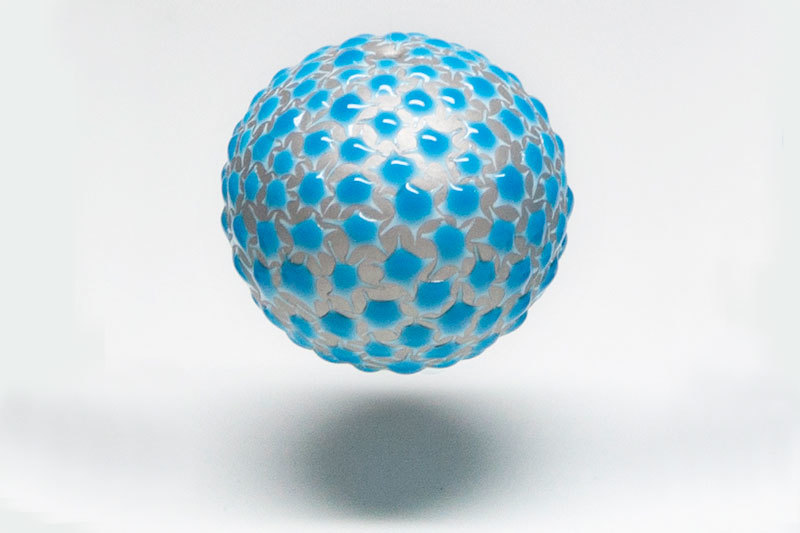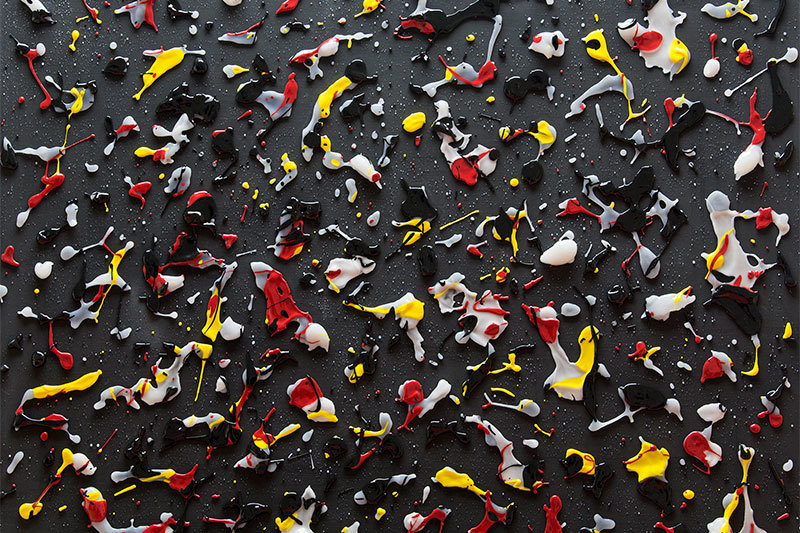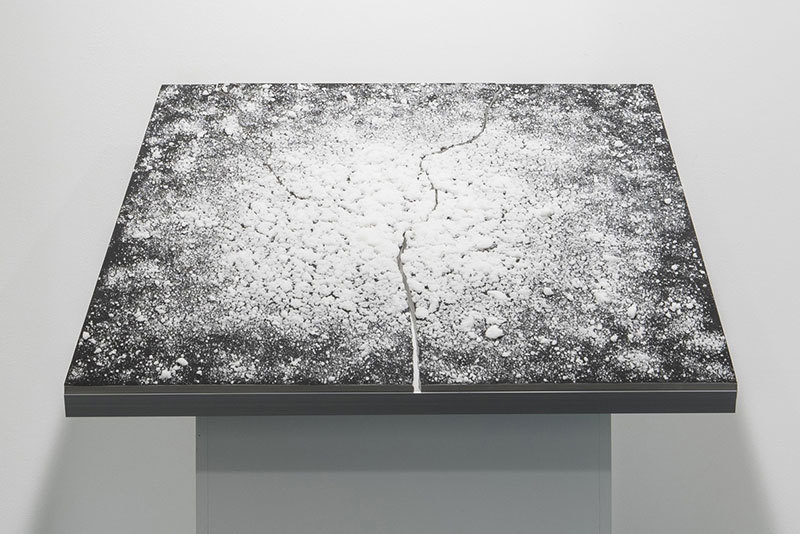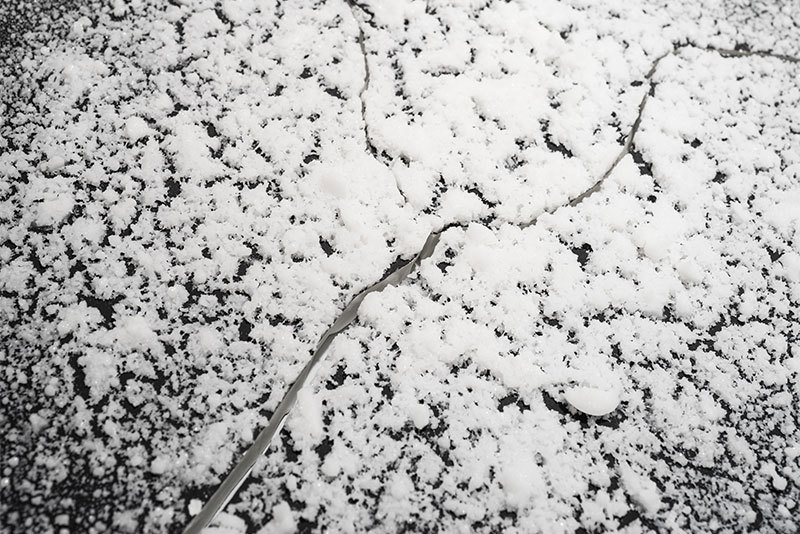When I heard about the "Graze" series from producer Taichi Nakamura, who is pursuing "Modern Kutani" rather than "Old Kutani," and artist and scientist Motokaze Nakamura, I honestly thought it was just a modern take on that "Aochibu" technique. However, after seeing several pieces, I realized my interpretation was quite off the mark.
The pieces displayed at their recent solo exhibition looked like this. At first glance, they resemble contemporary paintings created by splattering liquid pigment onto canvas. Yet, this flat black background is also pottery. Fresh glaze is fired onto it, preserving the spherical form of water droplets. It's a world that seems to defy gravity, where time stands still. Next to the work is a sign that says "Please touch" instead of "Don't touch!"—because it is ceramic. You can touch it directly and feel it.
Displayed at the exhibition entrance, this piece also resembles a sculpture capturing the moment something is born from the snowy depths of the Hokuriku region. While inheriting the tradition of Kutani ware—the sole official kiln of the Kaga Maeda family—it simultaneously undertakes challenges unlike anything seen before.
As an artist and a scientist, I have continually prayed for the perpetuation of humanity. Humanity should hold reverence and awe for nature and strive for coexistence with it. (Excerpt)
My art embodies the ideal relationship created by nature and humanity. I primarily use materials that existed when Earth nurtured life approximately 4 billion years ago—water, earth, minerals, metals—and heavily borrow natural energies like the atmosphere, heat, and gravity that also existed then. (Omitted)
Nature and humanity transcend an equal relationship, becoming inseparably bound. This is the birth of a new life form. I believe my most cherished works possess the power to change the world. For the perpetuation of humanity.
Mr. Motokazu Nakamura's vision of "coexistence between humanity and nature" is unwavering. Underpinning it is the philosophy that all beings are equal, and only through treating each other with respect can both parties realize their fullest potential.
That said, realizing this vision is no easy task. So, what is the bottleneck? Mr. Nakamura Motokaze likely identified the problem as "modern people having lost their sense of distance from nature" and proposed solving it by "catching the earth." In other words, by creating vibrant works using materials like water, soil, minerals, and metals, he seemed to propose a relationship where humans, enveloped by nature, cradle a small piece of nature in the palm of their hand.
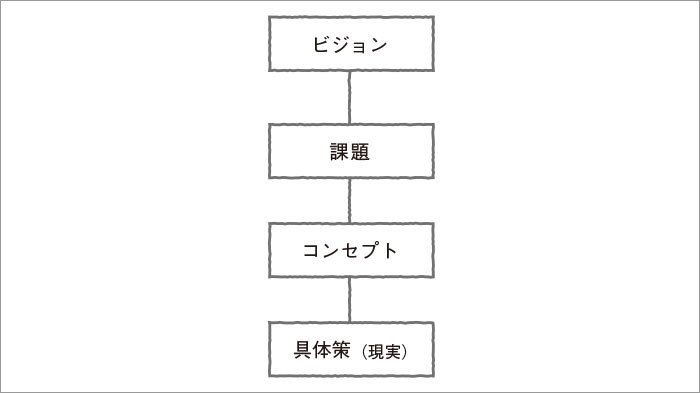
Vision Challenge Concept Specific Measures Chart
And the concrete initiatives guided by this vision and challenge are clear.
For example, the "Glaze" mentioned earlier is an original glaze developed from the desire to eternalize the shimmer of water droplets glistening in sunlight. While it sounds simple, creating a glaze that never existed in history is an extremely difficult and time-consuming task. Achieving this without giving up likely stemmed from a clear vision beyond just thinking "it seems kind of interesting."
The concept of "Catching the Earth" isn't something Motokaze Nakamura said; it's something I imagined while gazing at the works. But by putting this "perspective" into words, each piece felt more accessible.
What lies ahead for this technique, which defies easy classification as either painting or ceramics? For instance, unlike paintings, these ceramics not only withstand water but even develop a unique patina. It seems he envisions utilizing this characteristic to exhibit large-scale works outdoors.
Tradition is being breathed new life into by vision, living on in the present.

